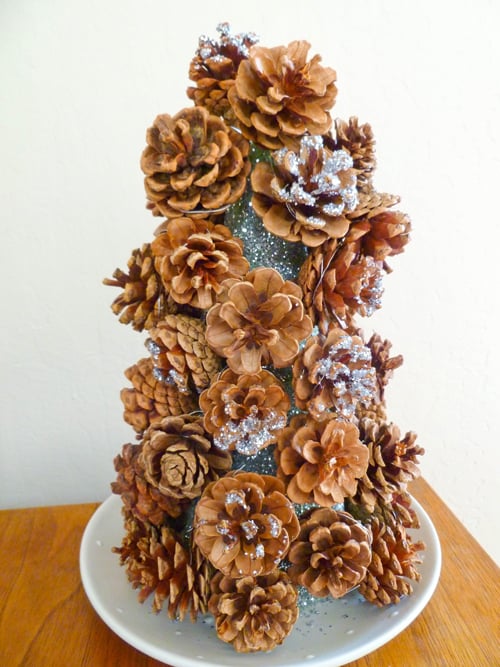Science project
Rocket Nose Cone Science
2011 VIRTUAL SCIENCE FAIR ENTRY
Abstract
A water bottle rocket is a rocket made out of a 2 liter bottle. It uses a launcher made out of pvc pipe or a rubber stopper, to launch the rocket into the air. Once you have attached the rocket to the launcher you pump up the bottle to the desired pressure with the bike pump. You then pull the string which releases the rocket and causes it to soar into the air. This demonstrates Newton’s Third Law of Motion. For all action forces there is an equal and opposite reaction force. This is what makes the rocket launch into the air.
This experiment tested what type of nose cone attached to a water rocket would allow the rocket to stay in the air for the longest period of time. I used three different types of nose cones. These types were parabola, hemisphere, and cone. I also had a rocket without a nose cone for my control. What I did in this experiment was I built a homemade bottle launcher out of ½ inch pvc pipe. I then launched each type of rocket 30 times, and recorded the time the rockets stayed in the air.
In this experiment I proved that my hypothesis was correct. Attaching the parabola nose cone to the rocket proved to be the best way to reduce the drag on the rocket and allow it to stay in the air the longest. It had an average of 3.5 seconds in the air. The second best nose cone was the cone, with an average of 3.29 seconds. The third best nose cone was the hemisphere with an average of 3.2 seconds. The rocket with the least time in the air was the control with no nose cone. It had an average of 3.01 seconds. This experiment proved that adding any type of nose cone to a rocket is better that not having one at all.
Type
Grade
7th and 8th Grade
Difficulty of Project
Cost
Safety Issues
The rocket launches at a very high rate of speed.
Time Taken to Complete Project
Objective
This experiment tested what type of nose cone is best to use on a water bottle rocket. My goal was to find what shape of nose cone would cause the rocket to stay in the air for the greatest amount of time.
Materials and Equipment/Ingredients
- 75 cm ½ inch pvc pipe
- 20 cm ½ pvc pipe
- 30 cm ½ inch pvc pipe
- 40 cm ½ inch pvc pipe
- (4) ½ inch pvc elbows
- 45 cm ½ inch pvc pipe with release
- 13 cm ½ inch pvc pipe
- 6 cm 1 ½ inch pvc pipe
- hose clamp
- (9) 25 cm plastic ties
- Duct tape
- Pvc cement
- 230 cm string
- ½ inch pvc end caps
- (5) 15 cm plastic ties
- ½ inch pvc tee elbow
- (4) 2 liter soda bottles
- 25 cm by 9.5 cm foam cone
- 5 cm by 9.5 cm foam hemisphere
- 5 cm by 8.5 cm foam parabola shaped cone
- Hot glue gun
- Stopwatch
- (16) 5 inch by 8 inch index cards
- Scotch tape
- 60 liters of cold water
The materials were found at the hardware store, the grocery store, and the auto parts store. They were readily available and found at many common stores.
Introduction
I have always been interested in rocketry. At the age of eight I built my first rocket powered only by water. From then on, I have been experimenting and testing new ways to make the rocket stay in the air for the longest amount of time. I have tested what is the best type of fin to put on the rocket, how much water to put in the rocket, and even how much weight to add to the rocket. In this experiment I tested what was the best nose cone to attach to a water bottle rocket.
Terms and Concepts for Background Research
- Drag
- Air Resistance
- Thrust
- Weight
- Lift
- Pressure
- Air Flow
- Aerodynamic Forces
- Center of Gravity
- Center of Pressure
Research Question
What is the best type of nose cone to use on a water bottle rocket?
Experimental Procedure
- Assemble the rocket launcher according to the diagram. (glue all the joints together with pvc cement)
- Attach nose cones to 3 of the 4 bottles using hot glue.
- Make fins for the rockets by folding a 5” by 8” index card in half and then cutting it into the shape of a triangle.
- Repeat step 3 fifteen more times. (you will make a total of 16 fins)
- Attach 4 fins evenly spaced to each rocket using scotch tape.
- Fill 1 rocket with exactly half a liter of water.
- Place the rocket on the launcher and using the bike pump, pump 20 psi of air.
- Have someone stand by you with a stopwatch.
- Release rocket by pulling string.
- Record the time it takes the rocket to reach the ground.
- Do steps 6-10 for each of the 4 rockets 30 times.
- Record all the times in your composition book.
Results
|
Trial
|
Control
|
Cone
|
Hemisphere
|
Parabola
|
|
1
|
3.1
|
3.2
|
2.9
|
3
|
|
2
|
2.9
|
3
|
3.3
|
3.2
|
|
3
|
3.1
|
2.6
|
2.9
|
3.1
|
|
4
|
3.2
|
2.9
|
3.1
|
3.5
|
|
5
|
3.2
|
3.3
|
3.3
|
3.5
|
|
6
|
3.1
|
3.3
|
3
|
3.6
|
|
7
|
2.9
|
3.2
|
3.4
|
4.5
|
|
8
|
3
|
3.3
|
3
|
3.1
|
|
9
|
3.1
|
3.1
|
3.4
|
3.3
|
|
10
|
3.2
|
4
|
3.4
|
3.5
|
|
11
|
3.3
|
3.3
|
3.1
|
3.3
|
|
12
|
2.7
|
3.4
|
3.4
|
3.5
|
|
13
|
2.7
|
3.1
|
3.5
|
3.4
|
|
14
|
3
|
3.5
|
3.5
|
3.7
|
|
15
|
3.3
|
3.4
|
3.2
|
3.6
|
|
16
|
2.6
|
3.5
|
3.4
|
3.5
|
|
17
|
2.9
|
3.5
|
3.2
|
3.1
|
|
18
|
3.4
|
3.5
|
3.6
|
3.3
|
|
19
|
2.9
|
3.2
|
3
|
3.8
|
|
20
|
2.5
|
3.4
|
3
|
3.6
|
|
21
|
2.9
|
3.1
|
2.9
|
3.8
|
|
22
|
3.1
|
3.5
|
3.1
|
3.4
|
|
23
|
3.2
|
3
|
3.1
|
4
|
|
24
|
2.9
|
3.5
|
3.2
|
3.4
|
|
25
|
2.9
|
3.2
|
3.4
|
3.6
|
|
26
|
3.2
|
3.8
|
3.2
|
3.8
|
|
27
|
3
|
3
|
3.2
|
3.7
|
|
28
|
2.8
|
3.1
|
3.3
|
3.4
|
|
29
|
3.1
|
3.3
|
3.2
|
3.5
|
|
30
|
3.1
|
3.4
|
2.9
|
3.4
|
|
AVG
|
3.01
|
3.29
|
3.20
|
3.50
|


Conclusions
In this experiment I proved that my hypothesis was correct. Adding the parabola nose cone to the rocket has proven to be the best way to keep the rocket in the air for the longest amount of time. It had an average of 3.5 seconds of flight time. Adding the cone to the rocket also made a big impact on the time of flight. The rocket with the cone stayed in the air on average for 3.29 seconds. The third best nose cone to add to a rocket was the hemisphere nose cone. This rocket averaged a flight time of 3.2 seconds. Finally, the rocket with no nose cone added, proved to be the most inefficient. It averaged only 3.01 seconds, which was the worst of the four rockets. In conclusion adding the parabola, cone, and hemisphere shaped nose cones all proved to increase the flight time of the rockets compared to the control rocket with no nose cone.
Questions for Further Research
If I were to do this project again, I would have tested more types of nose cones. I would also conduct more trials.
I could expand upon my research by studying why one nose cone is better than the other.
Bibliography
Aerospace. Rocket Nose Cones and Altitude. Online. 16 December 2010. http://www.areospaceweb.org/.
Gurstelle, Williams. Backyard Ballistics. Illinois: Chicago Review Press. Inc, 2001.
Harper, Gavin D.J. 50 Model Rocket Projects for the Evil Genius. New York: McGraw-Hill, 2007.
Science Toy Maker. Building an Overhead Water Rocket Launcher. Online. 6 December 2010. http://sciencetoymaker.org/.

Education.com provides the Science Fair Project Ideas for informational purposes only. Education.com does not make any guarantee or representation regarding the Science Fair Project Ideas and is not responsible or liable for any loss or damage, directly or indirectly, caused by your use of such information. By accessing the Science Fair Project Ideas, you waive and renounce any claims against Education.com that arise thereof. In addition, your access to Education.com's website and Science Fair Project Ideas is covered by Education.com's Privacy Policy and site Terms of Use, which include limitations on Education.com's liability.
Warning is hereby given that not all Project Ideas are appropriate for all individuals or in all circumstances. Implementation of any Science Project Idea should be undertaken only in appropriate settings and with appropriate parental or other supervision. Reading and following the safety precautions of all materials used in a project is the sole responsibility of each individual. For further information, consult your state's handbook of Science Safety.













